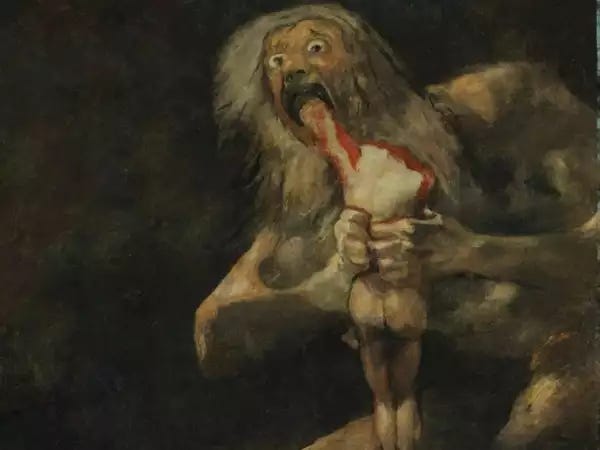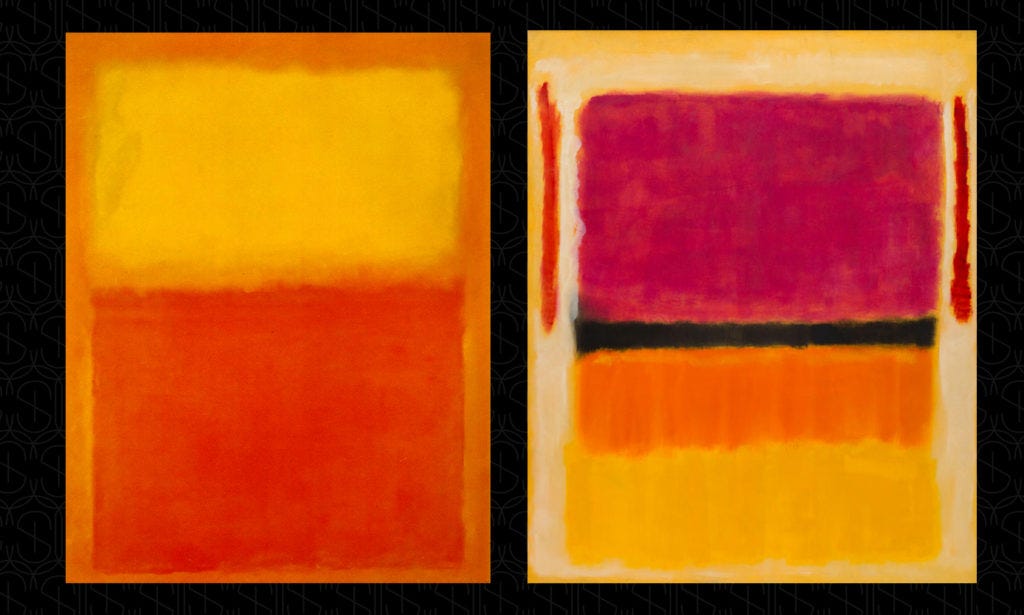When looking at art, particularly art in museums, do you find yourself looking for the plaque, not just a name or medium but for some deeper explanation? For some clue that will tell you if this is art or Art? I certainly do. There is a very specific type of thrill I get when I find myself looking and obsessing over an art piece; pulling as much from the visual clues. Till I pull out my phone and search and find my interpretation was “correct” or at least in consensus with the academics.
Context can be anything that contributes to our understanding, like authorial intent, a biographical history of the artist, a historical and political movement,anything to add meaning to what Im looking at and my interpretation.
I’ve been thinking about the influence a little context has on our interpretation of visual arts. Is there anything wrong with relying on context? I don’t think so, but there are certainly pros and cons. Truly the most insightful and moving thoughts have just as often been from an art critique or historians as they have from teenage girls on their Tumblr blogs and toddlers in museums, there’s a certain elitism we hold when looking at art that I feel drains joy from our lives and has William Morrison turning in his grave.
Despite what I’ve just said the pros of thoroughly investigating art history are glaringly obvious. Especially in a time where teens stand next to modern art captioned, "art I could've made" Their view is limited to thinking that aesthetics and their concept of “skill” are the only discerning factors an art piece could hold. Our modern understanding of art couldn't exist without historical and contextual lenses.
Biographical context in particular adds to the captivating mythos of art, revealing the artist's personal experiences and influences. I'd certainly argue that Van Gogh wouldn't be Van Gogh without our modern appreciation of his mental health struggles and insight into his personal life. When it comes to seeing art there’s the political and social impacts, gender politics, and everything in between. Even location; There is something truly visceral about learning “Saturn devouring his son” was painted on the wall of Goya’s kitchen, context like that I feel is tangled into the scripture of art, as much as a brushstroke.
To be fair before now I never really considered the idea that one could rely too much on context, and if im honest it’s not an issue that impacts the majority of people, but rather the small subsect of art enthusiasts and academics. neither of which I think care what I might think on the subject.
Summers, David wrote in “‘Form,’ Nineteenth-Century Metaphysics, and the Problem of Art Historical Description: That the “context principle” has its limitations. He argues relying too heavily on historical context can lead to an overly deterministic approach to interpretation of the artwork. Reduce it simply to historical circumstances. This may dismiss the “autonomy of the artwork” or rather the autonomy of the viewer to see the artwork as a standalone visual piece that we can experience without any influence.
(I also feel there is a place for aesthetic appreciation alone, that despite the value of authorial intent, an art piece may simply not appeal to us visually. That is to say even with good intentions art can be ugly! (whether this defines it as good or bad isn’t really of real interest to me. The power of the viewer's perception vs the collective experience is!)
Mark Rothko a colour field, abstract artist wanted art to be a spiritual experience and dismissed the idea that his personal life or intent should hold any power over the viewer. The viewer is not a monolith; art once released to the public is an immortal piece that will henceforth be seen by people of every era. For every age and demographic, the capacity to evoke multiple interpretations across different historical, and cultural contexts can’t be dismissed. When it comes to how we see art there’s a definite bias toward a Western standard of “art” whether that’s to put a Western lens on all art or to dismiss a unique perspective a POC may have on a Western piece.
Finally, Summers also reflects on the implications of relying on the “Historical context principle” suggesting the role of art historians as a discipline is limited because historical narratives are inherently selective and interpretive, influenced by the biases and interests of art historians and the political contexts.
I do not doubt that the generations of white cis male historian’ views of Historical art pieces have come with their own biases and preconceptions. I’m a Pakistani Muslim woman, and there is no doubt that I or any of my peers wouldn’t have a unique insight into art, that our experience would be inherently unique. Women have spent generations, lifetimes, being depicted in art, and in a male-dominated patriarchy and their interpretations and insight into art about women are bound to contain bias.
I won’t pretend like this take isn’t incredibly surface level, that there are dozens of factors I haven’t considered or research I haven’t done. I only write this out of my interest in expanding my love of art, to expand the idea that while the context I’m given is important, it’s not a stop sign for my mind or opinion. Education on the history and theory of art is something I think is vital to people's enjoyment of the world, art itself is a reflection of the human spirit and can be a reflection of an artist, ourselves, or our world.
Yours, Chanda.
Extras :
Van Gogh's painting gets a name changed after Chef notices something
(a fun example of what unique life experiences can offer to art)
A video that combines formal and historical analysis perfectly, and adds depth and value to a painting, is just a good watch!






also! if i have to add something to it and this was brought down by brian eno in an interview and that is throughout the our lives when we have studied art, we have been obsessed with a solo individualistic genius, you know how we go like PICASSO is a genius! and we just think that it all existed in his head like he was born with it but i think its important in order to fully appreciate art and to reduce the distance between artist and the ordinary people that we have created since centuries is that we understand that historically these artists were always part of a larger scene. Kadinsky wasnt working alone, he was working with a lot of people, community of artists watching each other, appreciating, creating and more. eno devised a word for it called ‘scenius’ which means the intelligence of a whole community. i just felt it’s important to highlight this since in the current economics of the art world where it’s really easy to pretend an artwork is good because it came from pollock or someone who were inherently genius. anyway great essay :) lovely to see you on my feed after a long time